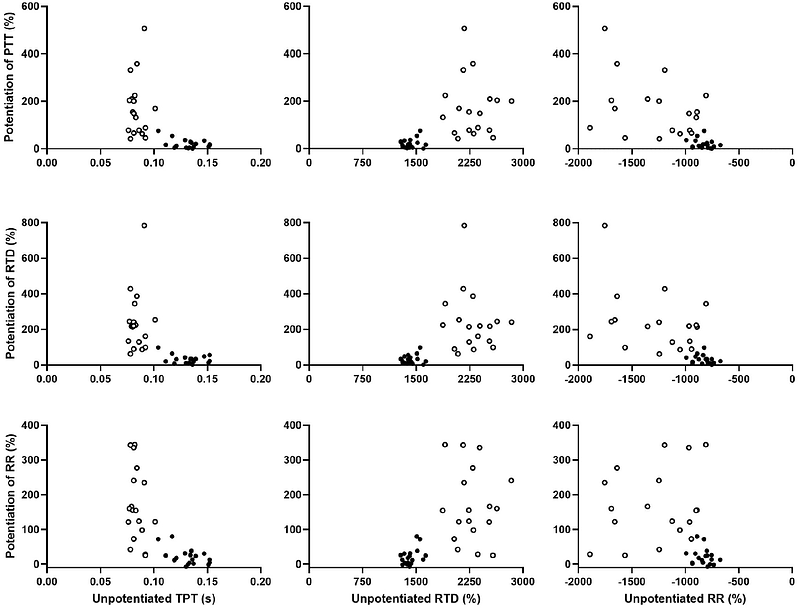Post activation potentiation is greater in human triceps brachii versus triceps surae muscles

Post activation potentiation is greater in human triceps brachii versus triceps surae muscles
Zoughaib, W. S.; Fry, M. J.; Singhal, A.; Hoffman, R. L.; Coggan, A. R.
AbstractIntroduction/AimsPost activation potentiation (PAP) is an inherent characteristic of muscle wherein an increase in twitch force is observed after voluntary activation. This phenomenon is believed to be largely due to phosphorylation of the regulatory light chain of myosin. In rodents and other species, PAP occurs predominantly or exclusively in fast twitch muscles. However, it has been suggested that in humans PAP occurs more or less independently of muscle fiber type.\n\nMethods18 healthy men and women (27{+/-}8 y) underwent an electrical muscle stimulation protocol during which two sets of four twitches were elicited both pre and post 6 s maximal voluntary contractions of both the triceps surae (60-70% slow twitch) and triceps brachii (60-70% fast twitch) muscles.\n\nResultsUnpotentiated peak twitch torque (PTT) was higher in the larger triceps surae vs. the smaller triceps brachii (i.e., 13.4{+/-}5.3 vs. 3.4{+/-}2.1 Nm; P = 8.22 x 10-13), but time to peak torque was shorter (i.e., 84{+/-}7 vs. 132{+/-}14 ms; P = 6.92 x 10-14) and the relative rate of torque development (RTD) was greater in the triceps brachii (2294{+/-}257 vs. 1425{+/-}102 %/s; P = 1.93 x 10-11). PAP increased PTT and the absolute RTD by 172{+/-}124% and 240{+/-}170% in triceps brachii versus only 20{+/-}20% and 31{+/-}24% in triceps surae, respectively (P = 1.26 x 10-4 and 1.30 x 10-4, respectively). However, PAP-induced changes in half-relaxation time and the relative rate of relaxation did not differ between the two muscle groups.\n\nDiscussionWe conclude that PAP influences contraction but not relaxation of human muscle in a fiber type dependent manner.